.jpg)
The territory of Vico Equense with its “Casali” built as a refuge for the inhabitants from the raids of the Saracens, invites you to take a pleasant walk admiring the landscape of the coast or the gentle hills and its Mediterranean scrub, which with its perfumes manages to create that magnificent feeling of gratefulness. As you walk through the hamlets of Sant'Andrea and San Salvatore, you will see ruined remains and expanses of vegetable gardens or vineyards.
History, legend and myth create an original weave that invites discovery. The different civilisations that have succeeded one another can be seen in the architecture, portals and majolica domes of the farmhouses. The green expanses of olive trees lead back to the cult of Minerva, and the slopes of Monte Faito evoke the wizards and elves who chose them as their home.
Hillside itinerary: Massaquano, Alberi and Monte Comune
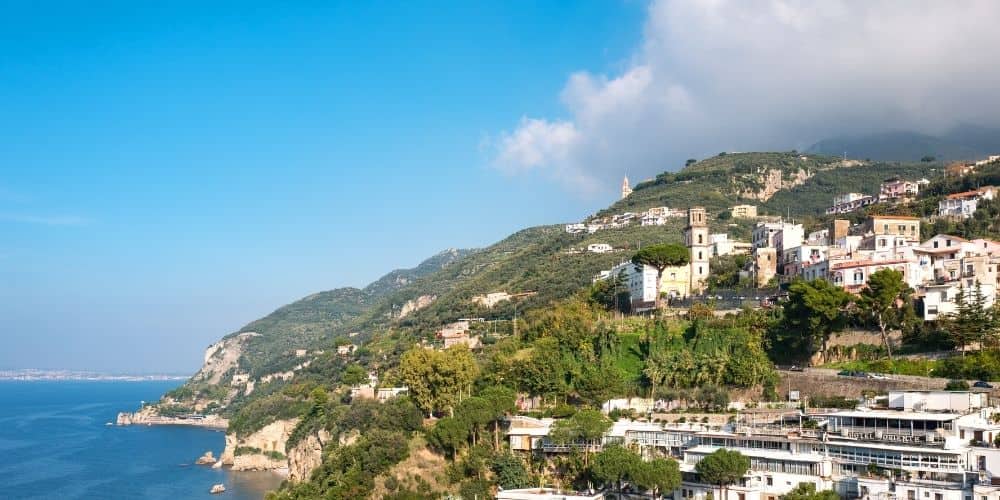
MASSAQUANO is the oldest hamlet in Vico Equense at about 330 meters above sea level. It will be possible to visit the Chapel of Santa Lucia along this itinerary, covered with frescoes of late Giotto matrix and the Church of San Giovanni Battista all'Olmo. Not to be overlooked is the landscape and naturalistic aspect, with its thick Mediterranean scrub.
From the “CASALE” of ALBERI starts a short but exciting path that climbs among the olive trees up to the hill of the Camaldoli, where you can admire, besides the splendid panorama on the Plain of Sorrento, the ruins of an ancient Camaldolese hermitage, later become Villa Giusso. The Camaldoli can also be reached by a carriage road which starts from Via Raffaele Bosco, near Arola; this route, after the initial steep climb, is almost flat, flanked by chestnut and olive trees.
MONTE COMUNE, a hill of calcareous nature, 877 metres high, can be reached by paths or mule tracks that start from various hamlets in the hilly part of Vico Equense. It is an ancient agricultural area used for grazing Agerola cows, from which the milk for the famous and tasty provolone del monaco is obtained. When you get to the top of the mountain, the view is spectacular, and on a clear day you can see Punta Licosa. The view stretches from the Gulf of Salerno to the Gulf of Naples, passing the island of Capri. All this amidst unimaginable scents and colours. Anemones, daffodils and crocuses as well as various species of orchids bloom along this path. Chestnut woods are also used to make the typical "pagliarelle" (straw matting) used all along the coast to protect citrus plants from the sun and winter cold.
Mountain Tour: from Moiano a Monte Faito
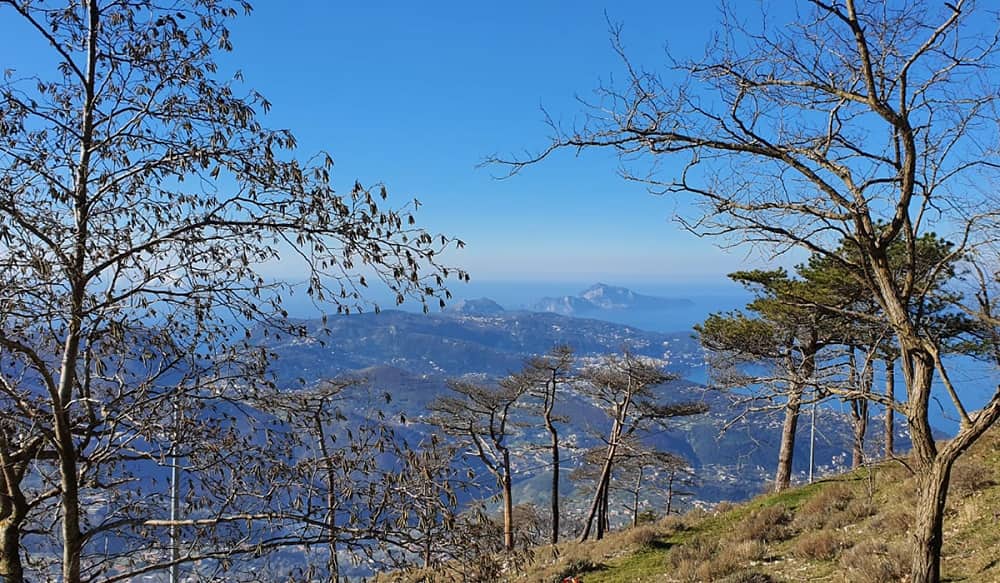
The largest farmhouse in the hilly area is that of MOIANO, 512 m above sea level, on the slopes of Monte Faito. Moiano can be considered the gateway to the highest and most important mountain of the Lattari Mountains; the oldest road is the one that, starting from Moiano and passing through Chiaiare, arrives near the present Sports Centre of Faito, at 967 m above sea level. This is a rather demanding path, but very interesting from a landscape and naturalistic point of view, passing through Mediterranean maquis and thick chestnut groves. From the Sports Centre, which can also be reached from Vico Equense via State Road no. 269, a convenient asphalt road makes it easy to reach the Sorgente Lontra (Lontra Spring), among pine, chestnut and beech trees whose foliage creates changing suggestions in every season.
The ideal starting point for the various itineraries on MONTE FAITO is Piazzale dei Capi, so called because in the past it was the point where the cables (dialectally called "capi") of a cableway used to transport timber and other Faito products easily downstream were located. From Piazzale dei Capi, a path runs along the entire crest of the mountain to the Sanctuary of San Michele at an altitude of 1268 m above sea level, amidst pine and beech trees, while the panorama opens out over the Sarno Plain, from Vesuvius to the Matese mountains and the Picentini mountains. Not far from the Sanctuary of San Michele, along the road leading to Piazzale dei Capi, the clearing of Pian del Pero, at an altitude of 1159 metres above sea level, opens out into the beech wood, from where two paths lead into the wood, to discover the thousand aspects of its nature. The first, shorter, leads to Monte Cerasuolo, at 1213 m above sea level, with a splendid panoramic view of the entire Gulf of Naples. The second leads to Conocchia, at 1275 metres above sea level and, although longer and more demanding, the initial stretch is completely flat and follows an easy path that can also be used by prams for children or the disabled, crossing the entire beech wood as far as Casa del Monaco. From the Sanctuary of San Michele, an easy path through the beech forest leads to the Fosse della Neve (Snow Pits): large holes dug in the ground in which, during the winter months, covered with leaves and soil, snow was stored. The frozen snow was stored for a long time until the summer months, when it was dug out and transported to the valley, and from there to Naples, to make refreshing drinks. Around these pits one can see beech trees with large and majestic trunks which, unlike the others, were not cut down periodically because their shade helped to preserve the snow. From the clearing that is the starting point of this path, another one begins, which, after a short downhill stretch, climbs higher and higher towards the summit of Monte Sant'Angelo a Tre Pizzi, at an altitude of 1444 m above sea level, in the territory of the municipality of Pimonte. The landscape that opens up is majestic, with surprising views extending as far as the Ponziane islands and the Circeo Promontory. The flora is very rich, with Calabrian pines, cedars, firs and chestnuts dominating. Along the way we come across the Grotta dell'Acqua Santa, on whose walls a tiny carnivorous plant grows, the Pinguicula hirtiflora, a relict of the last Ice Age. The last stretch of the ascent to the mountain, known as "Il Molare" because of its characteristic shape, is particularly steep and demanding, but the difficulty encountered is amply compensated for by the view that can be enjoyed from the summit, ranging 360 degrees, from the Gulf of Gaeta to Punta Licosa, the southernmost point of the Gulf of Salerno, and from the Monti del Matese to the Monti Alburni.
Art and History between Santa Maria del Toro, Massaquano and San Salvatore
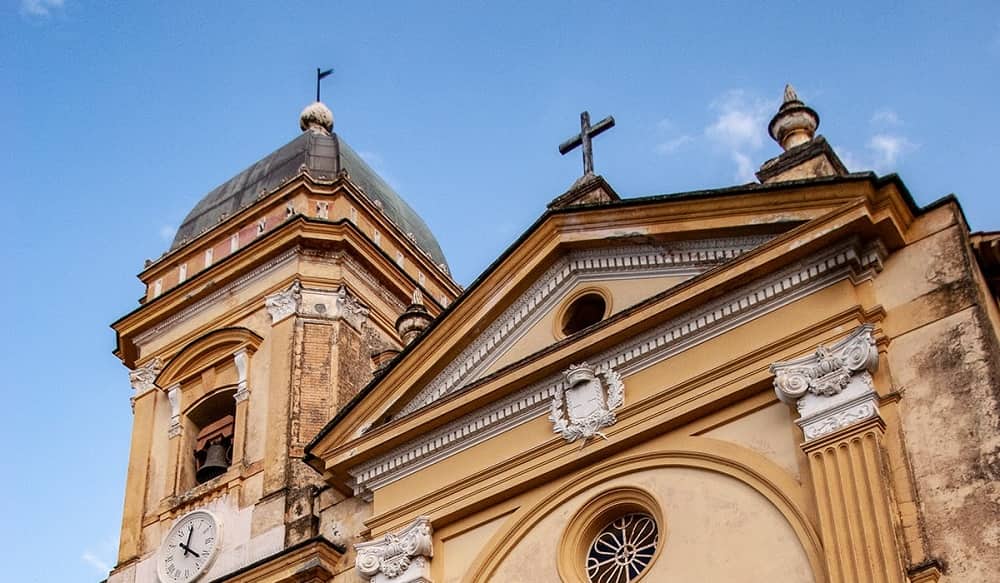
You can reach the hamlets of Vico Equense by paths or stairs immersed in nature, specifically olive trees, chestnut trees and Mediterranean shrubs. All these ways reach the main thoroughfare, the panoramic Via Raffaele Bosco, from which one can admire the scenery of the blue sea on the right and the gentle hills on the left.
Borgo di Santa Maria del Toro: according to an old legend, the name of this hamlet is due to a very particular event: one day, the inhabitants saw a bull genuflecting right in the place where covered by brambles and underbrush, there was a stable with a painted image of the Madonna and child, and so they decided to build a church there. Today, entering the small church, which has a frescoed dome depicting the glorification of St Gaetano, one is enraptured by the 17th-century coffered ceiling of beech and lime wood, while the effigy of the Madonna rediscovered in the stable is kept behind the main altar. Among olive and chestnut trees is Via dei Mulini, which Alfonso D'Aragona built to link Vico to Castellammare. It preserves the aqueduct that fed the mill built in 1478 by Alfonso D'Aragona.
In Massaquano, the oldest hamlet in Vico, there is a 14th century church dedicated to St. John the Baptist. Every year, the procession takes the Byzantine statue of Santa Maria a Chieia to the Convent of St. Francis along an ancient path. The convent has a single nave with an octagonal dome. Interesting for a view, but only on request, is the convent oratory adorned with 18th-century majolica from the Neapolitan school and contains a fresco of the Last Supper by Ludovico Spagnolo from 1636. Below the convent is the cemetery and from here you can take a path that leads to breathtaking beauty, in fact in just over half an hour you can reach the Sperlonga Spring that offers an unparalleled view of the coast and Vesuvius. At Massaquano, in an obscure subway, stands the 14th-century church of Santa Lucia, a Gothic structure with a cross vault and frescoes on the walls that have recently been brought to light.
The small, quiet hamlet of San Salvatore is characterised by the many farmhouses clustered together and the Church of Santa Maria delle Grazie, which houses a Madonna in one of its niches, an object of great devotion for the locals. The church's uniqueness is also due to the choice of pastel colours.
Each hamlet is a precious jewel

From San Salvatore, continuing along the uphill path, we come to the "Grotta dell'Eremita" (Hermit's Cave), a cave half-hidden by shrubs, with a Madonna and Child with Saint Joseph sculpted in high relief on one wall. Along the route that leads to MONTE FAITO, at an altitude of 600m, there is Moiano, which preserves in the church of San Renato the wooden statue of the bishop of Sorrento.
Across Via Gradoni towards Ticciano, among farmyards and cultivated fields, a long flight of steps leads to a small 15th-century chapel. In this silent, fortified place, the inhabitants of Vico took refuge to escape the plague in 1656. From here, a wooded path leads to a charming clearing with a sheer view of Positano.
Prezzano, between Arola and Ticciano, is famous for its aubergine festival in August. On this occasion, it is also possible to visit the narrow streets of the ancient village and some of the gates are used to accommodate local craftsmen.
Prezzano is famous both for silk processing and for the skill of working chestnut wood, which becomes "sporte" (baskets) for fruit, vegetables or fish. After the wood has been left to dry in the oven, it is cut into strips and then the skill of weaving begins, requiring great patience and hours of work for a useful but also ornamental product.
Arola is a farmhouse with a double view: the Sorrento coast and the Gulf of Naples. There is still a strong evidence of rural construction and its central place is the 16th-century church of S. Antonino, dedicated to the saint who, according to legend, stopped here to quench his thirst. In August, the church square becomes the centre of the famous "sagra del Riavullillo", a typical Arolese cheese with chilli pepper and olive inside. From Arola, taking Via Camldoli, you reach the Astapiana hill. After passing the arch of a crenellated tower, you arrive at the former Camaldolese Convent, now private property and a charming residence. This place can also be reached by a small uphill road that starts from Alberi. Then downhill you come to Fornacelle, which next to the church of Saints Peter and Paul has a beautiful bell tower with a coloured ceramic clock.
Resuming the panoramic road of Via Raffaele Bosco, we reach Seiano, which dominates the Equa plain. The village dates back to 1300 and in the church of S. Maria Vecchia, which has a fresco of the Madonna and Child on the entrance portal, there is a singular collection of ex votos, all with a marine theme. The church of San Marco Evangelista, on the other hand, is round and neoclassical in style, with the Chartae Gloriae in gold leaf on the high altar on either side of the tabernacle. Taking the narrow street Punta La Guardia, you will reach Punta Scutolo and its tower, through a path among lemon and olive trees with small stone balconies and white peasant houses. Then taking the state road towards Sorrento, you arrive at Montechiaro, famous for the Church of Santa Maria delle Grazie that can be admired from all over the peninsula thanks to its characteristic Pompeian red colour.
About the author
Written on 04/06/2021


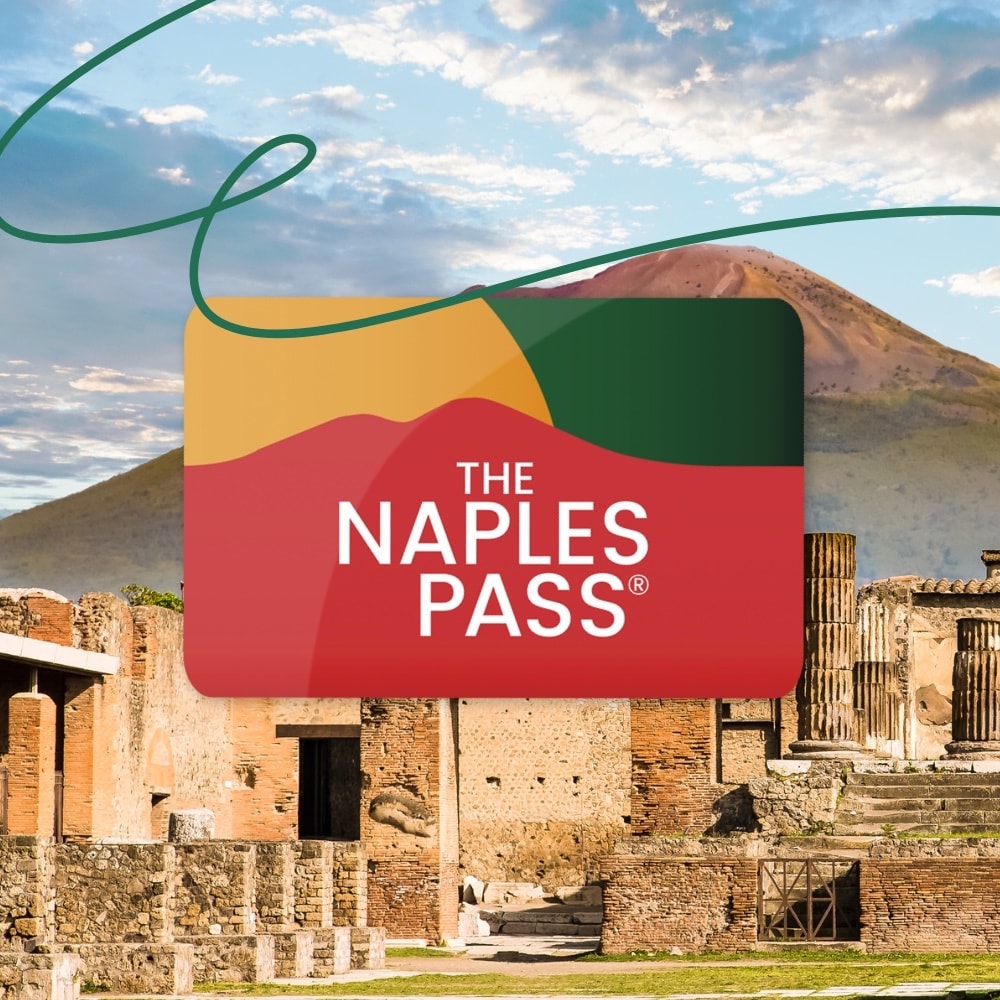
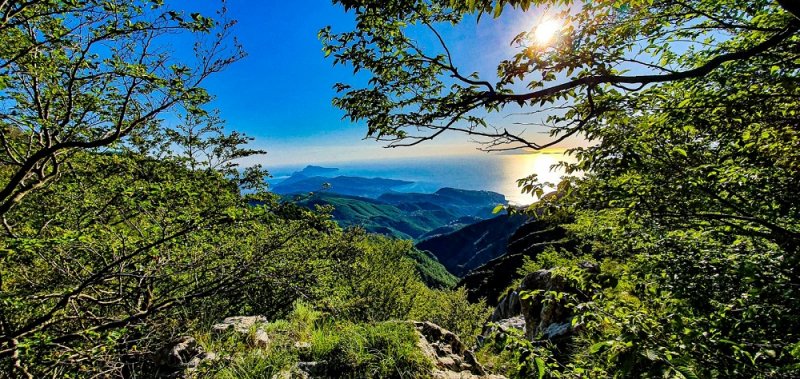
Claudia Prezioso
Vico Equense is a historic town with many trails that will amaze anyone who crosses them, thanks to the breathtaking landscapes among the thick Mediterranean scrub. From Massaquano, Vico's oldest hamlet, to Monte Faito, the starting point for several itineraries, there is a succession of art and natural wonders suitable for expert walkers and families.